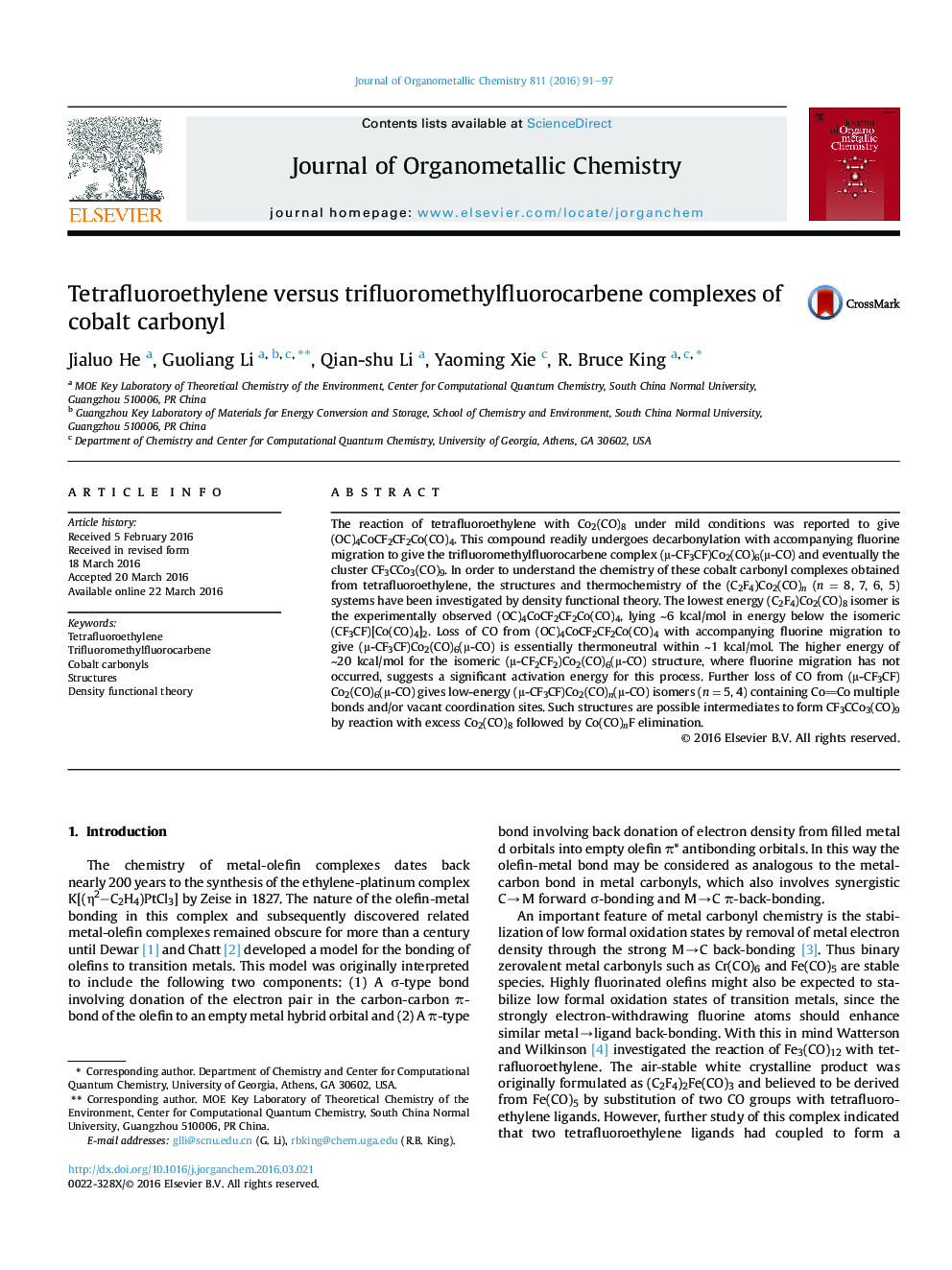| Article ID | Journal | Published Year | Pages | File Type |
|---|---|---|---|---|
| 1321836 | Journal of Organometallic Chemistry | 2016 | 7 Pages |
•The (C2F4)Co2(CO)n (n = 8, 7, 6, 5) systems have been investigated using density functional theory.•The lowest energy (C2F4)Co2(CO)8 isomer is the experimentally observed (OC)4CoCF2CF2Co(CO)4.•Loss of CO from (OC)4CoCF2CF2Co(CO)4 to give (μ-CF3CF)Co2(CO)6(μ-CO) is essentially thermoneutral.•The higher energy of ∼20 kcal/mol for (μ-CF2CF2)Co2(CO)6(μ-CO) suggests a significant fluorine migration activation energy.•Low-energy (μ-CF3CF)Co2(CO)n(μ-CO) isomers (n = 5, 4) contain CoCo multiple bonds and/or vacant coordination sites.
The reaction of tetrafluoroethylene with Co2(CO)8 under mild conditions was reported to give (OC)4CoCF2CF2Co(CO)4. This compound readily undergoes decarbonylation with accompanying fluorine migration to give the trifluoromethylfluorocarbene complex (μ-CF3CF)Co2(CO)6(μ-CO) and eventually the cluster CF3CCo3(CO)9. In order to understand the chemistry of these cobalt carbonyl complexes obtained from tetrafluoroethylene, the structures and thermochemistry of the (C2F4)Co2(CO)n (n = 8, 7, 6, 5) systems have been investigated by density functional theory. The lowest energy (C2F4)Co2(CO)8 isomer is the experimentally observed (OC)4CoCF2CF2Co(CO)4, lying ∼6 kcal/mol in energy below the isomeric (CF3CF)[Co(CO)4]2. Loss of CO from (OC)4CoCF2CF2Co(CO)4 with accompanying fluorine migration to give (μ-CF3CF)Co2(CO)6(μ-CO) is essentially thermoneutral within ∼1 kcal/mol. The higher energy of ∼20 kcal/mol for the isomeric (μ-CF2CF2)Co2(CO)6(μ-CO) structure, where fluorine migration has not occurred, suggests a significant activation energy for this process. Further loss of CO from (μ-CF3CF)Co2(CO)6(μ-CO) gives low-energy (μ-CF3CF)Co2(CO)n(μ-CO) isomers (n = 5, 4) containing CoCo multiple bonds and/or vacant coordination sites. Such structures are possible intermediates to form CF3CCo3(CO)9 by reaction with excess Co2(CO)8 followed by Co(CO)nF elimination.
Graphical abstractThe lowest energy (C2F4)Co2(CO)8 isomer is the experimentally observed (OC)4CoCF2CF2Co(CO)4, lying ∼6 kcal/mol in energy below the isomeric (CF3CF)[Co(CO)4]2. Loss of CO from (OC)4CoCF2CF2Co(CO)4 with accompanying fluorine migration to give the experimentally observed (μ-CF3CF)Co2(CO)6(μ-CO) is essentially thermoneutral.Figure optionsDownload full-size imageDownload as PowerPoint slide
